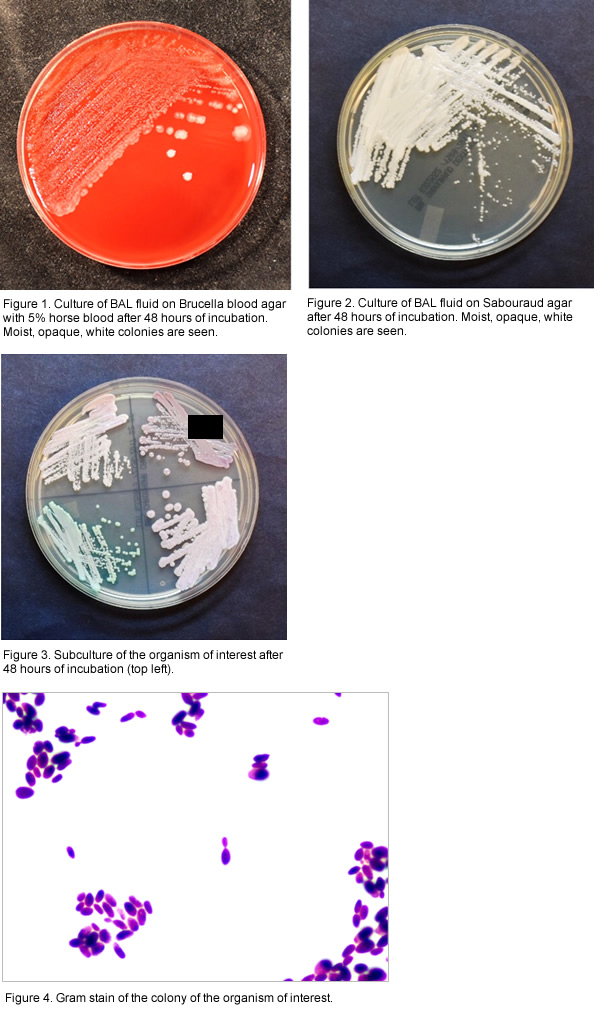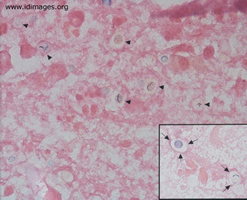2017 July

A man in his seventies with a history of end-stage lung disease secondary to idiopathic pulmonary fibrosis underwent bilateral lung transplantation on hospital day 1. Pre-operative bronchoalveolar lavage (BAL) of the donor lungs were performed per protocol. The procedure was uncomplicated and postoperative bronchoscopy performed revealed intact anastomotic sites. Post transplantation BAL cultures of the recipient were obtained and the patient was started on antimicrobial prophylaxis per protocol. Three days post transplantation, both the donor and recipient BAL cultures grew moist, opaque, and white colonies on Brucella blood agar with 5% horse blood (Figure 1) and Sabouraud agar (Figure 2), suggestive of yeast. These colonies were subcultured onto Candida CHROMagar and developed a light pink color after 48 hours of incubation (Figure 3, top left). Gram stain of the colony revealed ovoid budding yeast (figure 4). Further identification was attempted using Matrix Assisted Laser Desorption/Ionization Time of Flight mass spectrometry (MALDI-TOF MS; BioMerieux platform, in-vitro diagnostic database version 3.0 and research use only database 4.10) which generated no identification. A Vitek2 (version 6.01) yeast identification card identified the organism as Candida haemulonii. A RIOT (Rice Infusion, Oxgall, Polysorbate 80) agar plate did not reveal the presence of pseudohyphae and growth was observed on a Sabouraud agar plate incubated at 40°C.
The most likely diagnosis is which of the following?
 What is the diagnosis?
What is the diagnosis?
View all Image Quizzes